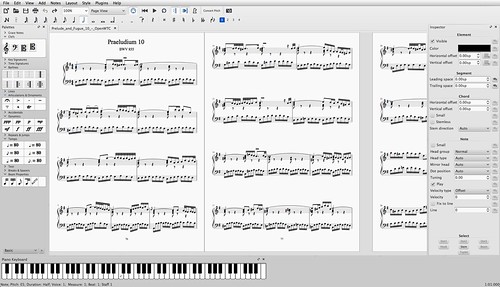 |
| Screenshot from the MuseScore website. |
Last summer I picked it back up. I was asked to play the accompaniment for a choir piece. I wasn't happy with the version and neither were most of the singers. I found other versions of the same hymn, but they weren't what the chorister wanted, so I offered to make a mashup version.
The song was seven or eight pages long, much too long for my previous methods of composing. I went on a search for software, because I figured that in the last twenty years, someone had to have invented a much nicer way of doing it. I tried messing with some of the music composition and audio mixing software I have, like GarageBand, but none of them could generate a written score. Enter the internet. I found several programs and tried them out. I bought myself a cheap midi keyboard. In the end, I kept MuseScore instead of the others I found. Even though it was mostly a drag-and-drop entry, it was easier to use and more intuitive than the others. It also has a great set of help forums.
It produces a nice, clean copy. It's got a lot of features buried in the program. I'm just scratching the surface of what I can do. I love that I can create not just piano scores, but full orchestral scores, or choir and accompaniment. It also breaks each song into individual parts so I can print out just a vocal score, or the flute part, or whatever parts I have.
I've used it for four different arrangements now, plus at least a dozen simplified versions of songs for my piano students. The interface is simple enough you can jump in and be creating music within a few minutes of installing the software. I've found plenty of tutorials and help forums for more complex questions. It's a very robust piece of software.
And best of all, it's free. Yep, totally free to download. Available for Mac or Windows or even Linux.
No comments:
Post a Comment
Keep it clean, keep it nice.